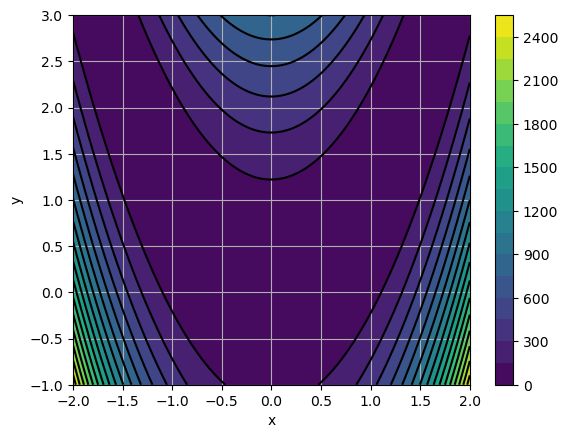Rosenbrock function and Curve fiting#
The Rosenbrock function#
The Rosenbrock function is a classical benchmark for optimization algorithms. It is defined by the following equation:
\[
f(x, y) = (1-x)^2 + 100 (y-x^2)^2
\]
%matplotlib inline
import numpy as np
import matplotlib.pyplot as plt
def Rosen(X):
"""
Rosenbrock function
"""
x, y = X
return (1 - x) ** 2 + 100.0 * (y - x**2) ** 2
x = np.linspace(-2.0, 2.0, 100)
y = np.linspace(-1.0, 3.0, 100)
X, Y = np.meshgrid(x, y)
Z = Rosen((X, Y))
fig = plt.figure(0)
plt.clf()
plt.contourf(X, Y, Z, 20)
plt.colorbar()
plt.contour(X, Y, Z, 20, colors="black")
plt.grid()
plt.xlabel("x")
plt.ylabel("y")
plt.show()

Questions#
Find the minimum of the function using brute force. Comment the accuracy and number of function evaluations.
Same question with the simplex (Nelder-Mead) algorithm.
Curve fitting#
Questions#
Chose a mathematical function \(y = f(x, a, b)\) and code it.
Chose target values of \(a\) and \(b\) that you will try to find back using optimization.
Evaluate it on a grid of \(x\) values.
Add some noise to the result.
Find back \(a\) and \(b\) using curve_fit



